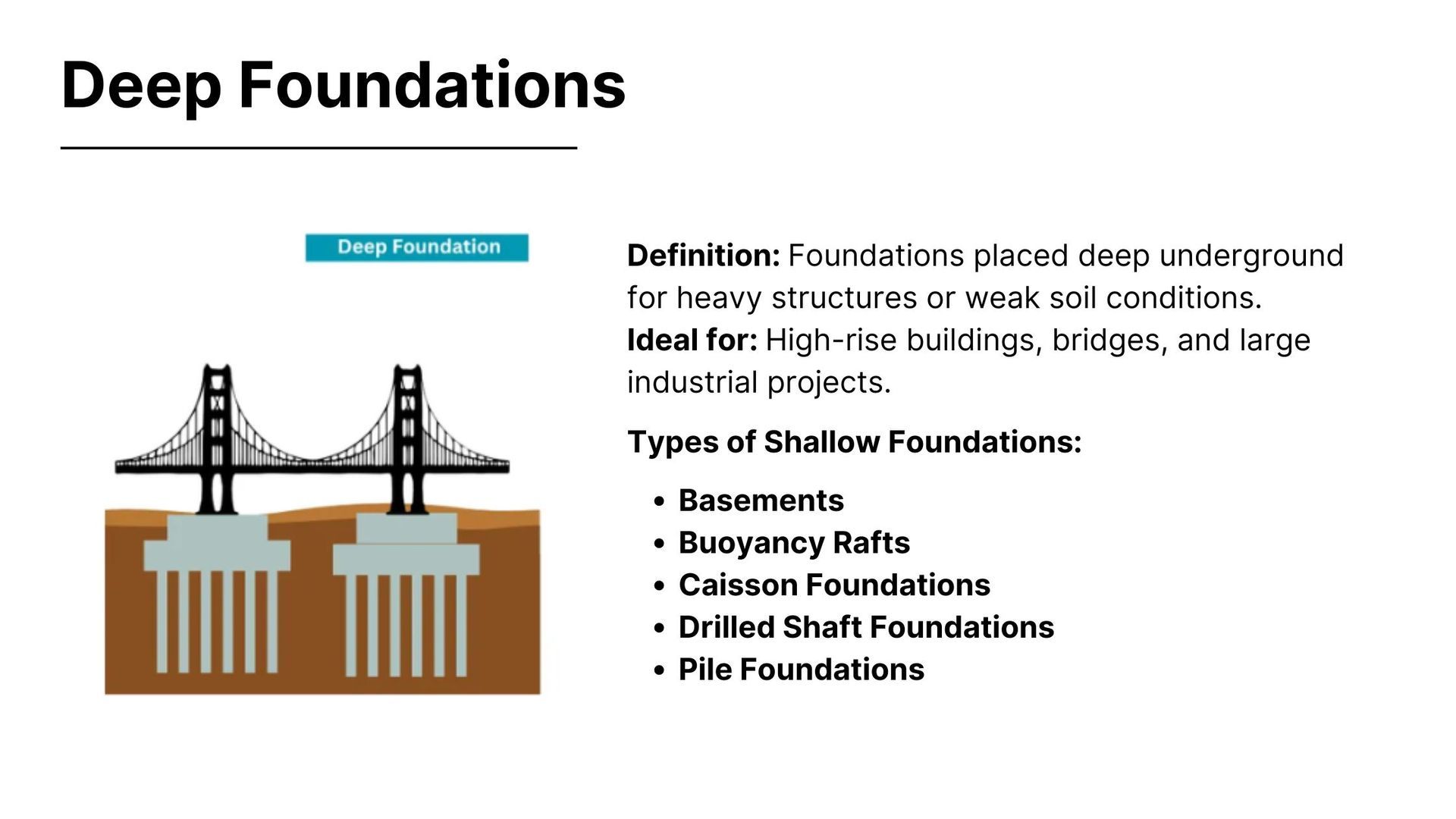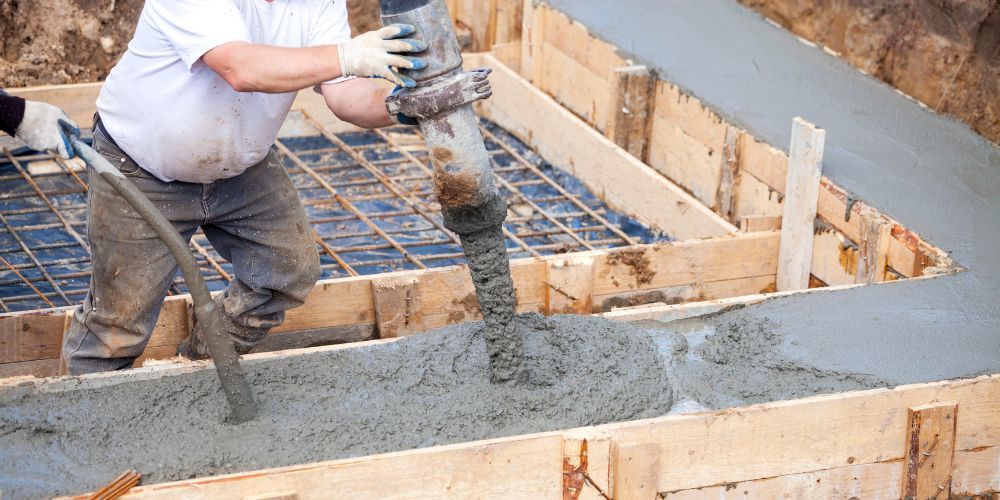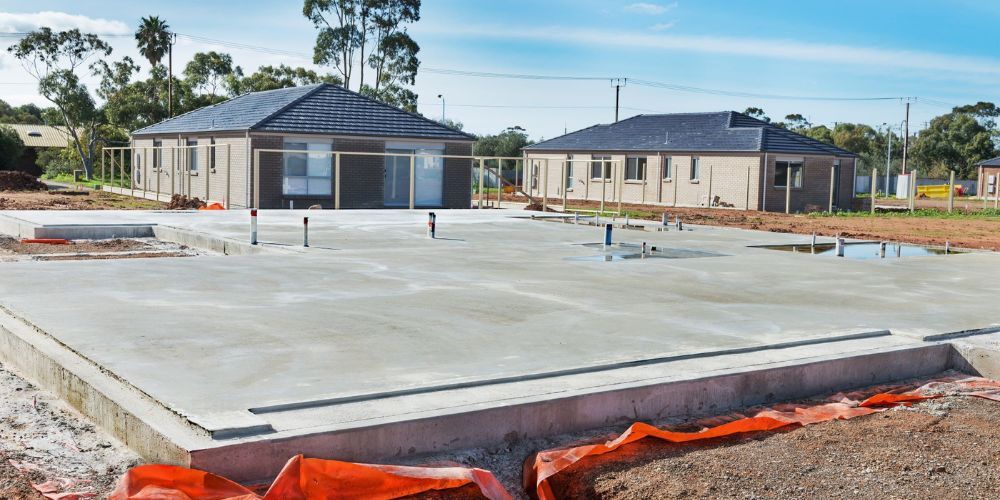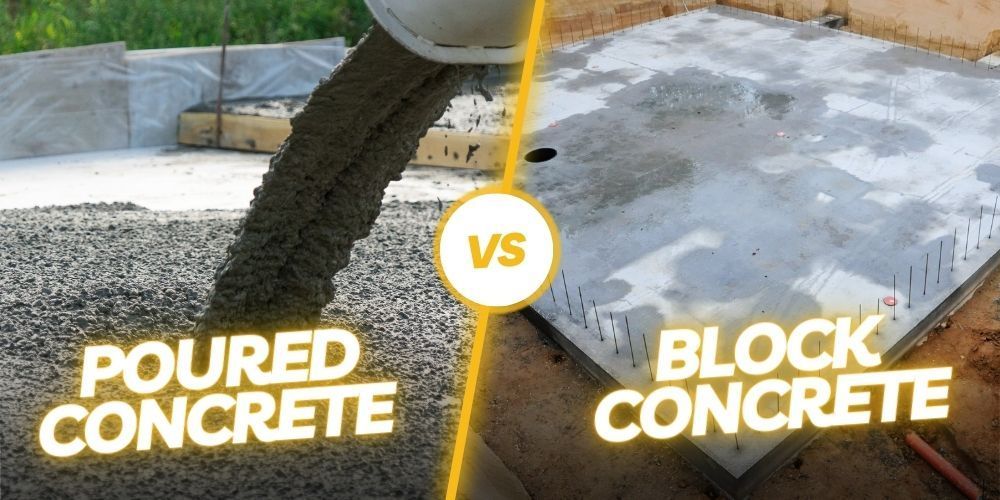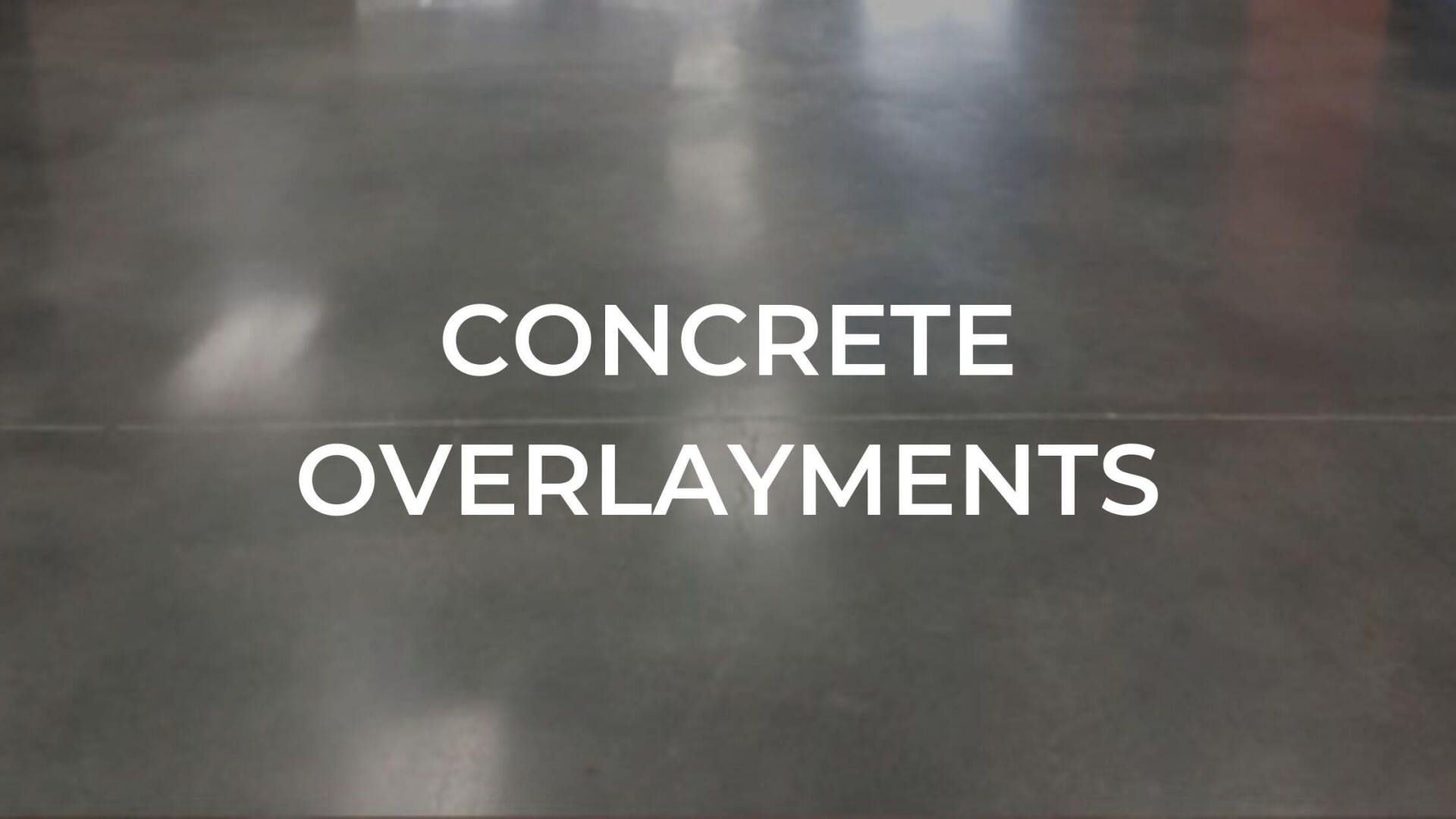Poured Concrete vs. Timber Retaining Walls
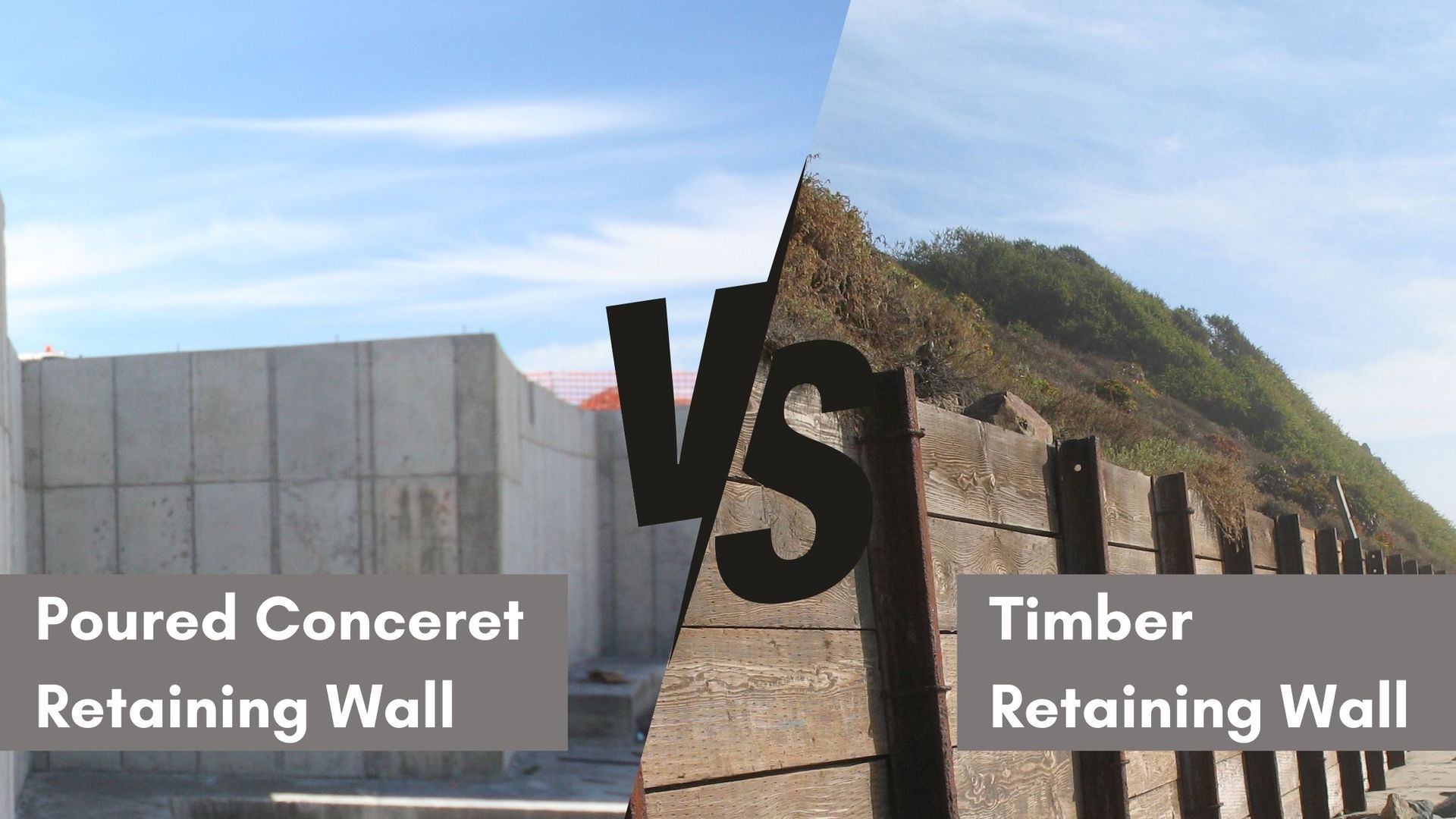
Both poured concrete and timber retaining walls come with their benefits and limitations. To decide between poured concrete and timber, you should understand the pros and cons of both. If you find yourself in this situation, you will need to choose between poured concrete and timber for your retaining wall. It will help you decide the right one for you.
Poured Concrete Retaining Walls
Poured concrete retaining walls are constructed by pouring concrete into forms to create a solid, durable wall. These walls are known for their strength and versatility, allowing for various design options such as color, texture, and the incorporation of embedded objects. When installed properly, concrete retaining walls offer much more room for customization than other materials.
Pros:
- Strength and Durability: Concrete walls are extremely strong, capable of holding up tons of earth and water, lasting for decades or even a century.
- Design Flexibility: Concrete allows for various design options like curves, angles, staircases, and different colors and textures.
- RESISTANCE: Concrete walls are fireproof, rot-proof, rustproof, and resistant to road salts and freeze-thaw cycles.
- EASE OF INSTALLATION: Concrete walls are faster and easier to install compared to labor-intensive masonry structures.
- LOW MAINTENANCE: They require minimal maintenance, needing only an annual cleaning and occasional inspection for cracks.
- ECO-FRIENDLY: Concrete retaining walls are non-toxic and made from natural materials like clay, limestone, and fly ash.
- AFFORDABILITY: The cost of installation is mid-range, offering a good cost-benefit ratio.
Cons:
- DESIGN DEMANDS: Proper design with effective support and drainage is crucial for concrete walls; not suitable for DIY projects.
- CHALLENGES OF INSTALLATION: Requires experienced contractors to avoid issues like cracking or bulging; removal can be complex.
- LIMITATIONS: Concrete block retaining walls have height limitations (up to four feet) and are complicated to remove if landscape changes are needed.
Timber Retaining Walls
Timber retaining walls have traditionally been used in many places, but are rarely the material of choice nowadays. That’s because they simply don’t last long. With an average life of about ten years, they begin to deteriorate quickly, especially after exposure to rain. This is true even of timber that has been treated.
Pros:
- Affordability: Timber retaining walls are generally cheaper than concrete walls, making them a cost-effective option.
- EASY INSTALLATION: Timbers are easy to install, suitable for both landscapers and DIY homeowners.
- AESTHETIC APPEAL: Timber walls have a natural beauty that can create various looks like rustic, modern, or beach style.
- VERSATILITY: Timber walls can be simple yet visually appealing, often considered the "old reliable" choice for landscapers and homeowners.
Cons:
- Wood Rot: Despite an expected lifespan of 15 to 20 years, timber walls may not last as long due to wood rot issues.
- STRENGTH: Timber walls are suitable for smaller structures; over time, soil pressure can cause timbers to soften and push out.
- DURABILITY: Timber retaining walls have a limited lifespan of around 20 to 25 years before needing replacement.
- MAINTENANCE: Timber needs treatment to protect against rot caused by soil moisture, requiring periodic re-treatment for longevity.
- DESIGN LIMITATIONS: Unless skilled in woodworking, there are limitations in the shapes and designs achievable with timber retaining walls.
Conclusion:
Poured concrete retaining walls offer unparalleled strength, durability, and design flexibility, making them a long-lasting and low-maintenance solution. While they may come at a higher initial cost and require professional installation. On the other hand, timber retaining walls provide a more affordable and aesthetically pleasing option with easy installation. However, their lifespan is significantly shorter compared to concrete walls, requiring regular maintenance and eventual replacement due to issues like wood rot.
Choosing between poured concrete and timber retaining walls will depend on your specific needs and priorities. If you require the services of a professional retaining wall builder, please contact us.



